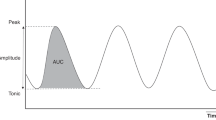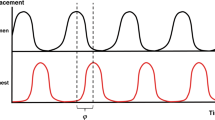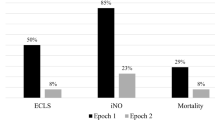Abstract
ABSTRACT: The newborn infant monkey consistently demonstrates a biphasic ventilatory response to hypoxemia. We have previously shown that the ventilatory depression during the late portion of this biphasic response is secondary to a decline in inspiratory volume that cannot be explained solely by central neural depression. We hypothesized that hypoxemia caused the diaphragm to fatigue, thereby accounting for the late ventilatory depression during the biphasic neonatal hypoxic response. Diaphragmatic fatigue has been reported to be associated with a decrease in the centroid frequency (Fc) of the electromyogram derived through frequency spectral analysis. Therefore, we analyzed the power spectral density of the diaphragmatic electromyogram recorded from percutaneously implanted crural diaphragmatic electrodes in five 2-day-old infant monkeys while they breathed room air and after 5 min exposure to two levels of hypoxemia during the late ventilatory depression. A fast Fourier transform of EKG free diaphragmatic electromyogram was used to compute the power spectral density and the Fc. The Fc during room air breathing was statistically equivalent to the Fc observed after five minutes exposure to 12% FiO2 (p = 0.79), and 8% FiO2 (p = 0.74) when ventilation was falling. In conclusion, our data demonstrate that changes in the centroid frequency are not present during the biphasic ventilatory decline that occurs with the hypoxic ventilatory response in newborn monkeys. Thus, diaphragmatic fatigue, as defined by a decline in Fc, does not occur during the neonatal biphasic hypoxic response.
Similar content being viewed by others
Log in or create a free account to read this content
Gain free access to this article, as well as selected content from this journal and more on nature.com
or
Author information
Authors and Affiliations
Rights and permissions
About this article
Cite this article
Watchko, J., Laframboise, W., Mayock, D. et al. Spectral Analysis of Diaphragmatic EMG during the Neonatal Biphasic Hypoxic Ventilatory Response. Pediatr Res 21, 238–241 (1987). https://doi.org/10.1203/00006450-198703000-00006
Received:
Accepted:
Issue date:
DOI: https://doi.org/10.1203/00006450-198703000-00006



